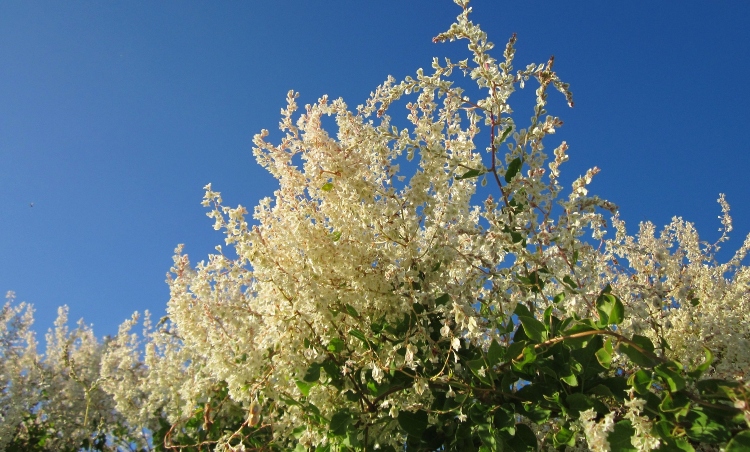
Russian vine, also sometimes referred to as the ‘mile a minute plant’, is an species native to areas of Asia. After being introduced to the UK in the late 1800’s, it quickly made its way into the ‘wild’ and has since flourished as an invasive species.
As suggested by its Latin name, fallopia aubertii (baldschuanica), Russian vine is related to Japanese Knotweed (Fallopia japonica). This close relation is where Russian vine gets its incredible growing speeds, and other similar physical similarities.
Identifying Russian Vine:
Russian vine, also sometimes referred to as Chinese fleece vine and silver lace vine, has many distinctive characteristics that can be used to identify it.
Russain vine has heart shaped dark green leaves, a similar shape to those from the Japanese knotweed plant. Further similarities can be found in the small pinkish-white flowers that grow on Russian vine, which are also very similar to those that grow on Japanese knotweed.
Further similarities Russian vine has with Japanese knotweed includes its hardiness; Russian vine is incredibly hardy and has the ability to thrive in all manner of conditions, just like knotweed. Also like knotweed, Russian vine grows incredibly quickly and tall. In fact, Russian vines grow even taller than Japanese knotweed! They can grow up to 12 metres in height, and spread up to 8 metres wide.
The primary difference between Russian vine and Japanese knotweed is that Russian vine grows in twisting vines, similar to bindweed. For that purpose, it is often utilised by individuals as a quick and easy way to cover up unappealing fencing, wall, or any other surface.
Its thick and vigorous growth makes it the perfect choice for such purposes, but unfortunately, if you’re not aware of the growth rates of Russian vine, it can quickly get out of hand and over take your garden.
If you’re struggling with Russian vine growth on your property, you may require professional weed removal services to remove it completely. Taylor Total Weed Control specialises in the removal of difficult and invasive species. If you’d like a no-obligation consultation or to arrange your FREE survey, reach out and contact us today. A member of our team will be more than happy to answer any questions you may have.
Contact Us
Read More: Plants That Look Like Japanese Knotweed
